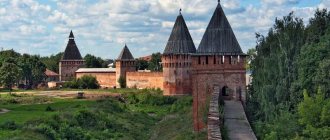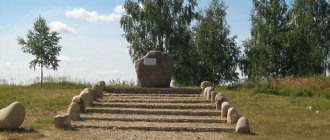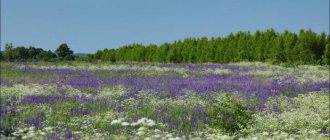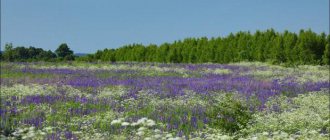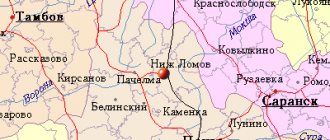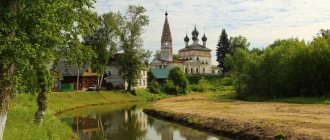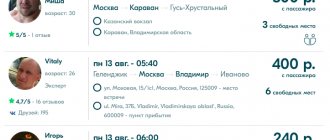Sychevka as a mirror of the Smolensk province
Once upon a time, a long time ago, during the Soviet system, a solid livestock complex was built near the village of Svetetskoye, in the Sychevsky district. The road to it through a swamp of 300 meters was paved with reinforced concrete slabs. Local residents could not be happier - there is a reliable connection with the entire district and the regional center. But the bourgeois-oligarchic revolution broke out in Russia - and the utter ruin of everything and everyone began, and, above all, agriculture, abandoned to the mercy of fate. Everything on the local collective farm also collapsed. It got to the point that a few years ago some people arrived with a truck crane and cars, pulled out the road slabs and took them away to God knows where. Now, as soon as it rains, the villagers will not be able to get through, they will not be able to get through.
“Wherever we turned with our troubles: to the police and to the district administration.” They didn’t get any sense: who destroyed the road, why, how can people continue to survive? - Petr Nikolaevich Viktorenkov, a former machine operator who has state awards for his work, complained to State Duma deputy A.V. Kazakov during his recent reception of citizens in Sychevka. – Once Zhirinovsky’s train stopped in our regional center. My brother-in-law managed to convey to him our request for help. So what. He sent the paper to Ostrovsky in Smolensk, and Ostrovsky to the head of the district administration, Orlov. Orlov promised in writing that in 2014 the Sutormino-Svetetskoye road would be taken over by the municipality and put in order, but nothing has been done so far. It turns out that everyone has no time for us. Yes, only a few people live in the village all year round. But we are people too and we want to live. Neither the ambulance gets to us, nor the fire truck, nor anything.
It's an ugly situation, to put it bluntly. And there are many similar ones in the area. It is no coincidence that most of the 23 people who came to see the deputy spoke so impartially about Sychev officials, headed by Mr. Orlov since 2010. People claimed that during the “Orlovschina” the area was in complete decline. The city-forming electrode plant is closed (see title photo). Agricultural production has been practically destroyed. The largest livestock complex, which was created to accommodate a modern, high-tech milk processing plant opened in Sychevka at the beginning of the century, was ruined. He is also on his last legs now. The local bakery is on the verge of survival. The municipality is depopulating. Sychevites leave in search of work and a better life in neighboring areas and in Moscow.
The local housing and communal services system is fragmented. The garbage disposal is disgusting. Many sewage flows into Vazuzu. Sychevites are not satisfied with the repair of housing stock and roads. The streets Svobodnaya, Krasnoarmeyskaya, Grigoryeva, Vinokurova, Krestyanskaya, Lomonosova, instead of a sand-gravel mixture, are filled with coarse crushed stone, which is now simply a pain to walk on.
Olga Ivanovna Vasilyeva is outraged by the way the capital renovation program for apartment buildings has been implemented in the region. Here's an example. Almost 1.3 million rubles were allocated for one of the houses on Bolshaya Sovetskaya Street. Despite complaints from residents, officials signed an acceptance certificate for the completed work. An independent construction examination showed that the total amount of repairs not carried out, as provided for in the estimate, amounted to more than 600 thousand rubles. A criminal case was opened on this fact. However, the bosses are like water off a duck's back.
It is impossible to get to the regional center from many villages. For example, the bus goes to the village of Lesnye Dali only on Mondays, and even then irregularly. The paramedic and midwife station there has been liquidated, how can sick people get to the district hospital? Unanswered question.
There is a real problem in a number of settlements with water supply. In the village of Yablontsevo, as Valentina Afanasyevna Zharkova said, people have to scoop dirty brown liquid from holes formed on the site of former water points of a long-rotten water supply system. The situation in the village of Vasilevka is even worse. They built a mine well there, which has no water. The leadership of the Seredsky settlement offers residents to purchase bottled water delivered by a water store, or to buy a tanker themselves, however, no one can really tell citizens who, on what and from where the water will be delivered in this container. They can't wait to see the construction of wells in the villages of Lukino and Burtsevo.
With undisguised bitterness, a group of members of the production cooperative “Collective Farm “Rassvet” told Alexey Valerievich about the ongoing dispossession of their farm. Many families here are left without work and livelihood. The agricultural enterprise, through the efforts of its director V.A. Sigina, is being brought, according to the applicants, to deliberate bankruptcy. Equipment, cattle, buildings and structures are sold without the consent of the general meeting. Collective farmers do not know where the proceeds go. Property shares are not allocated to them. They don’t allow housing to be privatized: pay 70-100 thousand rubles, then there will only be a conversation. The villagers despaired of finding protection anywhere, believing that district officials and local law enforcement officers were covering up for Ms. Sigina.
Long ago, the problem of capital repairs of housing in rural areas, which were once transferred to municipal ownership, became overdue in the region. For more than ten years, V.A. Zharkov from Yablontsev has been trying to put his former state farm apartment in order. Tatyana Afanasyevna Savina from the village of Nikitye, Karavaevsky rural settlement, and her disabled husband live in constant fear in the damaged half of the house, where the roof could collapse at any moment. This married couple has no children, there is no one to help them, and local bosses have only one excuse - there is no money. With such a decline, will the municipality’s economy survive?
Optimism about the state of affairs in the Sychevsky district was radiated only by local officials who came to see Alexey Kazakov - the heads of the education department of the administration Tatyana Nikonorova, the cultural department Tatyana Smirnova, the heads of two rural settlements Galina Kovarikova and Valentina Zhukova. The first two lovely, intelligent ladies did not complain about anything. On the contrary, they told the deputy how everything was wonderful in the industries they headed: with salaries, with personnel, with material resources, with talented children, and with the attention paid to them by the district leadership. The two village heads, as it was clear, experienced and wise, complained only about one thing: they had more than enough powers, but the means to solve everyday problems were a handful. It’s bad to be independent, but poor. This is the naked truth. Alexey Kazakov promised to bring this problem to the upper levels of government. In general, all of us who were present at the Sychevites had the opinion that four officials came to the deputy with one purpose - to unobtrusively show how they like to work with Mr. Orlov.
I will not bore readers further with a story about other problems and sorrows that concern the Sychevites. The decision of most of them is within the exclusive competence of municipal self-government bodies and regional authorities. It is there that official requests from the State Duma deputy will be addressed regarding all requests from local residents and measures taken by responsible officials to fulfill the requests and legal demands of citizens will be taken under control.
Alexander KOROLEV
You can send your news, photos and videos to the editorial office on WhatsApp at +79107850457
Description of the city: 1801
Sychevsk, a district city of the Smolensk province, lies at 55 degrees 42 minutes north latitude and 52 (32) degrees 33 minutes longitude, the distance from Moscow is 219, St. Petersburg 725 (723) and from Smolensk 227 versts. Its position is along the flow of the Vazuza River on the left, and the Losmina River on the right side. It was built again according to the highest confirmed plan, located along the slopes in an irregular figure, having a circumference of 5 versts and bounded on the eastern and southern sides by the Vazuza River and the western Losmina River, and on the northern and partly southwestern by an earthen rampart and ditch. Here, at the exits to the roads leading to the cities of Vyazma, Belaya, Rzhev and Zubtsov, there are four wooden outposts called: Vyazemskaya, Belskaya, Rzhevskaya and St. Petersburg. This City, which was formerly the village of Sychevki, according to the highest order of Her Imperial Majesty, blessed and eternal glory worthy of the memory of the Empress Catherine II, was established in 1779. inside this City there are churches: 1) Cathedral - stone, in the name of the Ascension of the Lord, with two chapels of St. Nicholas the Wonderworker and the Holy Martyr Theodore Stratilates. Around this church there is a stone fence with a chapel, at the corners of which on the southern side there are two more stone buildings, of which the spiritual Board is located in one, and the almshouse in the other. 2) Outside the city in the cemetery there is a wooden Nativity of the Blessed Virgin Mary. State buildings 1) A stone building in which there are two floors, of which the upper one houses the district and Lower Zemstvo courts, and the lower one houses the City Council, the Magistrate, the Verbal and the Orphan's courts. 2) The storage room for the treasury and the Archive are made of stone. 3) The stone building where the Mayor lives and the county Treasury and the School are located, where youth are taught Russian reading and writing, Christian law and Arithmetic. 4) Four wooden shops, of which two are salt shops and two are wine shops. 5) Five wooden drinking houses. Philistine building: Wooden houses ————“————“———— 313 Fryazhsky wooden cellars. ————“————“———— 1 Wooden tavern ————“————“———— 5 Benches for selling stones. “————“———— 5 government goods wooden “———— “———— 20 Barns for storing various wooden grains. ——-«———— 35 Wooden forges. ————«————«———— 6 Wood breweries. ————«————«———— 1 Factories for linen, clothes yarn, wood. ——-«———— 1 On top of this there is also an Infirmary and a wooden courtyard. Built by the local merchants and philistines, some of whom include runaway convicts. Two flour mills, one with four, and the other with three sets, wooden, given from the city Magistrate as quitrent, are located on the Vazuza River and are active during all yearly periods, except during low water. Big streets: 1. Soldatskaya 2. Belskaya 3. Rzhevskaya 4. St. Petersburgskaya Of these, there are 21 exiting lanes, each of which is called by name, such as: 1, Golitsynskaya; 2, Ekaterininskaya; 3, St. Petersburg; 4, Ziminskaya; 5, Kuznechnaya; 6, Square; 7, Artemovskaya; 8, Nikolskaya; 9, Artemovskaya; 10, Yakovtsovsky; 11. Lower; 12, Pavlovskaya; 13, Popovskaya; 14, Upper; 15, Aleksandrovskaya; 16, Burtsovskaya; 17, Losminskaya; 18, Voznesenskaya; 19, Vyazemskaya; 20, Melnichnaya; 21, Maltsovskaya. Residents in this City: Male. Women Headquarters and chief officers 22 19 Clergy and clergy 76 74 Clerks 29 20 Merchants of the 2nd and 3rd guilds 271 236 Bourgeois 450 425 Servants and retired soldiers 51 43 Household people 70 22 Total of both sexes 1768 people Some local merchants and townspeople trade in silk , paper, wool and other various small goods, as well as food supplies; while others buy and sell various types of bread, hemp, flax, cow butter, linseed oil, hay, honey and goose down. Some maintain inns. from which, by selling hay, oats, tar and other things, passing merchants receive satisfied benefits, while others are engaged in fishing, shoemaking, carpentry, and blacksmithing. Women practice ordinary household needlework. They have cattle breeding only for their own consumption, and even then in small quantities. Fairs in this city annually, and even then small ones, take place after Easter on the day of the Ascension of the Lord and December 6th, to which merchants from the cities of Vyazma, Gzhatsk, Rzhev, Zubtsov and Smolensk come with cloth of various materials and other small goods, and weekly auctions every week twice on Friday and Sunday, some of the surrounding villages bring various grains, flax, hemp, honey, food supplies, hay, firewood and other various village products for sale. Local residents get enough salt from Nizhny Novgorod stores. This city is abundant in water and the water is very healthy for people and livestock. The Vazuza River flowing here, through which the ferry service and the Losmina River operate, in the hottest summer time are: the first is from one and a half to two arshins deep, twenty fathoms wide, and the other is half an arshin deep, one and a half fathoms wide, in which fish are caught: pike, chub, ide, burbot, roach, perch, ruff and minnows, and occasionally catfish; Fishing on them always happens in the spring, although the development of water from them does occur, but no harm is caused to the city. The mentioned river and river freeze at the beginning of November, and open up at the end of March and early April. The soil in this city is silt and sand, which produces vegetable fertility in sufficient quantities in vegetable gardens. The land under the settlement of the city of Sychevsk consists, according to the projected plan, of 101 dessiatines 300 square fathoms, including inconvenient places 11 dessiatines 500 square fathoms. Owners: Sychevka from 1488, when it was recaptured from the Vyazma prince Vasily Byvalitsky by Tsarevich Ivan the Young, until 1691 it was a palace village. This year, Tsar Peter I gave half of Sychevka to the boyar Alexei Ivanovich Naryshkin, but then took his gift back in 1724 for the boyar’s misconduct - he did not appear on time to the tsar. Since then, no one else owned such large property in Sychevka; there were many different small owners. Churches: Cathedral of the Ascension of the Lord - History - built on the site of the ancient St. Nicholas Church in 1759-1775 - probably built by Ostashkov craftsmen. A good example of provincial baroque with decor in the Naryshkin style, reproducing the forms of the Transfiguration Church of Ostashkov, with chapels: Nikolsky and Theodore Stratelates. Built by the Naryshkins. 1759 - the main altar is illuminated. 1778 - an antimension was issued to the chapel in the name of St. Vlkm. Theodore Stratelates 1826 - antimensions were issued to the chapels of Theodore Tyrone and St. Nick. Miracle. 1936 - closed, destroyed during the war. The remains of the refectory (?) dating back to the end have been preserved. XIX - early 20th century, built into the gymnasium of a city school. 09/10/1936 - closed and occupied by the military department 1943 - blown up by the Germans. Description - stone, the main volume of the building like an octagon on a quadrangle ended with a second octagon of elongated proportions, on which stood a decorative five-domed structure, the outside was painted with white oil paint, the inside was plastered: the real one was covered with marble, and the refectory was painted on the plaster in 1905 with artistic paintings and ornaments (with 27 shelves and an ornamented wooden roof), the length of the church, including the bell tower, is 20 fathoms. 1 arsh. 7 tops, maximum width – 9 fathoms. 1 arsh. 9 verts., height to the top of the cornice: in a real church - 7 fathoms. 1 arsh. 2 tops, in the refectory - 2 soots. 1 arsh. 7 tops The church has one large dome and six small, large windows - 31 pieces, with double frames, window height - 3.5 arches, width - 2 arches, external casement doors: oak - 2, iron-clad - 1, internal double doors with mirror glass - 4 and single doors - 1, in front of the porch there is a carpentry vestibule with whitish glass: height - 6 arsh., width - 4 arsh. and length - 3 arsh. The iconostasis is 13 arsh wide, 22 arsh high. (valued at 14,300 rubles). The iconostasis in the aisles is 22 arsh wide. and 6 arsh high. (valued at 6,600 rubles). The church is heated by two tiled stoves, one plastered brick, two air heaters - with an influx of fresh air - and six fireplaces. A five-tier bell tower adjoins the refectory from the west. Wooden fence Coordinates: 55gr 49m 33.47s N and 34gr 16m 42.03s E. The parish has three clergy, the psalm-reader receives a government salary of 100 rubles (1912), a circle income of 4016 rubles, there is no church house, the parishioners are husbands. gender 1911. Clergymen: 1775 - 1807. Archpriest Semeon Uspensky 1783 - 1789. Priest Isidor (Fedor) Emelyanov 1783. Deacon Egor Gavrilov, priest Semeon Ivanov died this year 1788. Sexton Ivan Savin. 1807 - 1860. Priest Vasily Sokolov 1786 - 1826. Archpriest Nikita Savvich Konokotin (1844 - tonsured a monk). 1788 – 1807. Deacon Andrei Vasiliev became a sexton of the church. 1807 – 1826. Priest Evgraf Sredinsky 1810. Sexton Mikhail Kachevsky. 1810 - 1833. Deacon Alexey Strogonov. 1810 – 1869. Deacon Mittery Kudryavtsev, sexton Nikolai Smiryagin, sexton Ioann Strogonov, Georgy Piskunov. 1810 - 1879. Sexton Stefan Sergievsky (died the same year). 1810 – 1869. Priest John Abramovich Nechaev and Vsevolod Alekseevich Belyavsky. 1835 – 1850. Priest Joseph Nikitovich Kanakotin (died 1850) 1839 – 1889. Psalmist Pavel Kapustin. 1848 – 1849. Priest Parfeniy Navrotsky (died suddenly) 1848 – 1872. Archpriest Pyotr Vasilyevich Afonsky. 1861 – 1888. Priest Vasily Ioannovich Krapukhin. 1866. Priest Lavrenty Medvedkov. 1866 – 1873. Priest Simeon Uspensky. 1874 - 1886. Priest Mikhail Nikolaevich Sokolov. Until 1875. Deacon Vladimir Nazarevsky. 1875 - 1888. Deacon Andrian Chistyakov. Until 1876. Deacon Zakhary Smiryagin (died the same year). Until 1878. Psalmist Georgy Piskunov (died the same year). 1878 - 1879. Psalmist Egor Filippov. 1880. Priest Pyotr Smiryagin, Nikolai Krapukhin and Nikolai Sokolov. 1880 - 1910. Priest Vasily Ioannovich of Athos (died the same year). 1886 – 1900. Archpriest Alexey Ioannovich Mirmikov (Kalinnikov). Until 1887. Psalmist Sergei Kulyukin (died the same year). 1887 - 1906. Psalmist Alexander Belyavsky (died the same year). 1888 - 1899. Priest Timofey Fedorovich Chernavsky. 1888 - 1890. Deacon Grigory Kovalev. Until 1889. Psalmist Vasily Ogloblin and deacon Afanasy Kamentsev (died that year). 1889. Deacon Vasily Ogloblin. 1889 – 1891. Psalmist Alexander Vasiliev (died the same year). 1899 – 1900. Priest Simeon Ionovich Krapukhin. 1890 - 1891. Deacon Alexander Yushenov (died the same year). 1891 - 1892. Psalmist Ivan Ilyin. 1891 - 1894. Deacon Peter Nazarevsky. 1892 - 1894. Psalmist Alexander Lvov. 1893 - 1901. Psalmist Ivan Smirnov. 1894 - 1895. Psalmist Dimitry Markov. 1895 - 1902. Psalmist Ivan Sinyavsky. 1899 - 1910. Priest Simeon Krapukhin 1900 - 1924. Priest Ioann Vasilyevich Sokolov. Until 1901. Psalmist Ilya Dyakonov. 1902 - 1910. Priest Ivan Sinyavsky. Until 1903. Deacon Vasily Markov. 1902. Psalmists Konstantin Pashin. 1902 – 1909. Psalmist Alexander Shchitov. 1902 – 1903. Psalmist Dimitry Ioannovich Konokotin. 1903 - 1908. Deacon Mikhail Alexandrovsky. 1903 – 1904. Psalmist Mikhail Kulyukin. 1903 – 1904. Deacon Vasily Ogloblin (died the same year). 1904 - 1906. Deacon John Zverev. 1906. Deacon Vasily Glebov. 1909 - 1910. Psalmist Nikolai Solntsev. 1910. Priest Nikolai Vasilyevich Afonsky, psalmist Konstantin Smiryagin. 1910 – 1918. Priest Mikhail Nazarevsky. Until 1912. Psalmist Vladimir Grablin (died the same year). 1912 - 1913. Psalmist Rodion Veschunov. 1913. Psalmist Mikhail Lisitsyn. 1913 – 1916. Psalmist Nikolai Lomonosov. Until 1913. Psalmist Nikolai Smiryagin. 1916 - 1918. Psalmist Pyotr Zhegalov. 1st Chapel at the Cathedral Church of the Ascension - on Torgovaya Square, construction date unknown, ceased to exist in 1941-1943. Stone, on the north-west corner on the right, plastered outside and inside and painted with adhesive paint, the length of the chapel is 4 fathoms. 1 arch., 4 fathoms wide. 4 tops and height - 2 fathoms. 1 arch., in the chapel one small dome with a cross is painted with white enamel paint. There are 3 windows with double bars and frames, 2 external doors sheathed with iron and 3 internal single-leaf doors, a Russian stove with a stove bench. There is no iconostasis. 2nd Chapel at the Cathedral Church of the Ascension - on Torgovaya Square, construction date unknown, 11/01/1941 - opened under the Germans and consecrated as a church in the name of St. Nicholas the Wonderworker. In the 1960s it was closed, dismantled and transported to Elmanovo, and an administration building was built in its place. Stone, in the pseudo-Russian style at the holy gates, on a plinth made of wild hewn stone, architectural, not plastered on the outside, plastered on the inside and painted with blue adhesive paint, length - 3 soots. 12 tops, width – 3 fathoms. 7 tops and the height to the dome cornice is 7 fathoms, in the chapel there is one large dome and 4 small ones with gilded crosses, octagonal windows - 4, an external forged iron four-leaf door - 1 and an internal double-leaf glass door with mirror glass - 1. Iconostasis - with gilded thread - 2 soot. 4 tops and height - 2 fathoms. (valued at 1000 rubles). Coordinates (in GPS) are 55.826800 and 34.276880.


